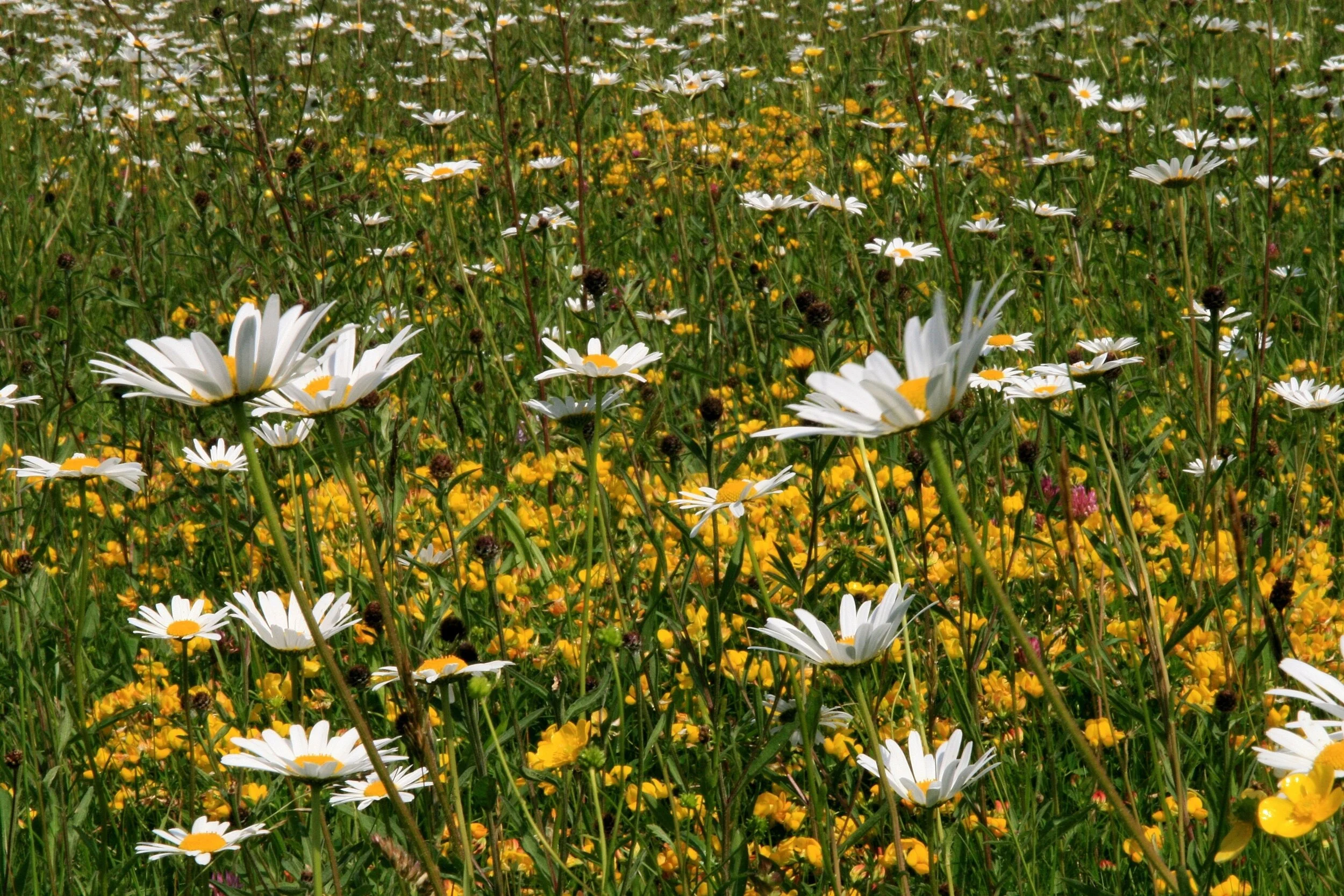
The Wildflower Meadow
The Wildflower Meadow, or Front Meadow, at High Beeches has been called a meadow since l848, when Sir Robert Loder bought ‘The Beeches’ and in all likelihood was a meadow long before that. It has not been cultivated for at least 80 years and grazing ceased in about l980. The only plants introduced are some narcissi cultivars in about l980 and the original clump of native birches has been replaced with the existing one. Evolving endlessly, some years it is a mass of ox-eye daises and other years the buttercups predominate. Recently the cowslips, Primula veris, the Common Twayblade, Listera ovata, and the Devilsbit Scabious, Succisa pratensis have been on the increase.
The meadow slopes to the southwest and the soil is slightly acid. There are 46 species of wildflower and 13 species of grasses, sedges, rushes and ferns to be found, which have been identified by the Sussex Botanical Recording Society as well as a number of rare fungi. The meadow attracts a huge number of insects including butterflies and moths.
The meadow is a Site of Nature Conservation Importance, SNCI, one of over 300 in West Sussex. There are 11 plants which are indicators of ancient meadow land, all of which are to be found at High Beeches, they are: Sweet Vernal- grass, Red Clover, Ribwort Plaintain, Red fescue, Crested Dog’s Tail, Red Fescue, Cock’s Foot, Yorkshire Fog, White Clover, Bird’s-foot-trefoil, Common Bent and Common Knapweed.

The Meadow Through The Year
The grass is cut in August and the hay removed by mechanical means.
Heavy Horse then harrow the meadow to remove the thatch, scatter seed and open up the sward to enable the wildflowers to seed successfully.
April
In April the first meadow grasses flower, one of the first is the Sweet Vernal-grass, Anthoxanthum odoratum followed by the Meadow Foxtail.
May
The first colour to be seen is yellow from the cowslips then in May the buttercups start to flower followed by the Yellow Rattle, Rhinianthus minor agg. Meadow Vetchling, Lathyrus pratensis and Common Bird’s-foot-trefoil, Lotus cornicula.
June
Late May and June sees the red of Red Clover, Trifolium pratense, pink of the Common Spotted-orchid, Dactylorhiza fuchsia and the whites of the Oxeye Daisy, Leucanthemum vulgare and the Lesser Stitchwort, Stellaria graminea.
August
Later in the summer/early autumn the beautiful Devilsbit Scabious, Succisa pratensis gives parts of the meadow a purple haze.



